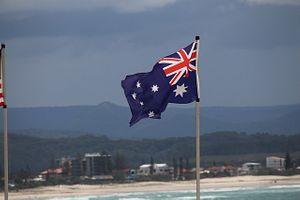With the United States dramatically lowering its federal corporate tax rate in December the Australian government felt compelled to respond. The government is currently hoping to lower the tax rate from 30 percent to 25 percent for companies with a turnover of more than $50 million. Companies whose turnover is less than $50 million will see their rates reduced from 30 percent to 27.5 percent. The government has argued that Australia’s tax rates need to be globally competitive, and that the knock-on effects will produce an increase in economic activity, the creation of jobs, the raising of wages, and ultimately a higher tax yield.
Putting aside the arguments about whether this economic theory holds true, or whether all countries measure and implement their corporate tax rates in the same manner, the government’s proposals are based on ideas around comparative attraction. That is, whether Australia can provide the requisite conditions to make the country more attractive for increased investment (domestic or foreign) than others. And further, that Australia can leverage this investment into enhanced national capabilities.
Yet increased political instability within a number countries, and a new unpredictability around trading norms, a simple assessment of comparative tax rates may no longer be deemed the primary factor in investment decisions. Investors may now be prioritizing certainty within markets, with moderate, but predictable, returns being given preference over more lucrative, but risky, investment opportunities in countries whose conditions are in flux. While large-scale capital flight may not occur, it cannot be dismissed as a possibility, and should be prepared for.
With 26 years of uninterrupted growth, durable institutional frameworks and norms of operation, a skilled workforce, alongside low corruption and an adequate ease of doing business, Australia should have the necessary conditions to potentially capture some investment that may be nervous about other markets. Although the country’s small population, expensive labor, and geographic isolation may hinder this attraction. However, for the Australian government, seeking to maintain and expand upon the country’s favorable conditions should now be at the forefront of its strategic vision.
Yet despite Australia’s positive economic environment and well-functioning social norms, its recent history of dramatic political leadership changes — and its political fracturing — does not project the firm stability necessary to distinguish Australia from other countries currently experiencing political uncertainty. The current governing Liberal Party is eating itself, with constant attempts to undermine the leadership of Prime Minister Malcolm Turnbull from actors within the party hostile to his leadership.
While the opposition Labor Party’s internal divisions during the Rudd/Gillard/Rudd years in government were more personality and leadership-style based, the current internal conflict within the Liberal Party is deeply ideological, and part of global trend of existential crises within conservative parties and their broader movements. The parochial sentiment that has captured the Republican Party in the United States, fueled events like Brexit in the United Kingdom, and strengthened reactionary parties across Europe, has also emerged within the Liberal Party. This sentiment — a nationalism that ultimately undermines national interests — is in tension with a number of prevailing liberal-democratic norms and is hindering the ability of the more liberal conservative actors within the party to maintain the country’s values, protect its stability, and provide investor confidence.
Part of this parochial sentiment is being channeled into a current public debate about the country’s population, something that must seem incredibly odd to most international observers. The attraction of skills, and the increased investment that comes with them, has been the central pillar of Australian economic strategy for the past few decades. Without a large domestic pool of resources, any political maneuvering — and manipulation of public emotions — that undermines the ability of the country to be attractive hinders the country’s advancement. This is not only of domestic concern, but one of enhancing the national assets necessary to negotiate shifting global balances of power.
The Lowy Institute Asia Power Index places ranked Australia sixth out of 25 countries, an impressive position considering its size. Yet the index also places Australia 13th in terms of future trends, pointing to an expected decline in its power relative to other Asian states as other countries begin to take greater advantage of their human capital and increase their strategic capabilities. For Australia to maintain its regional influence, retreating in on itself would only accelerate this relative decline.
A recent New York Times headline stated that Australia is “Rich, Strong, and Afraid of the World.” It was a fair assessment. Over the past 40 years or so the country has displayed in an incredible opening to the world, becoming wonderfully diverse and highly prosperous as a result, yet the national character has never quite lost its fear of abandonment. At present reactionary actors within Liberal Party are channeling this fear into an angry and insular posture, an outlook at odds with the approach that has served the country well. The proposed tax cuts may or may not work as a strategic advantage to Australia, however, the broader concept of openness has clear evidence of success.

































